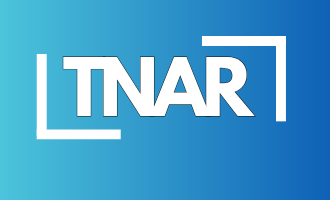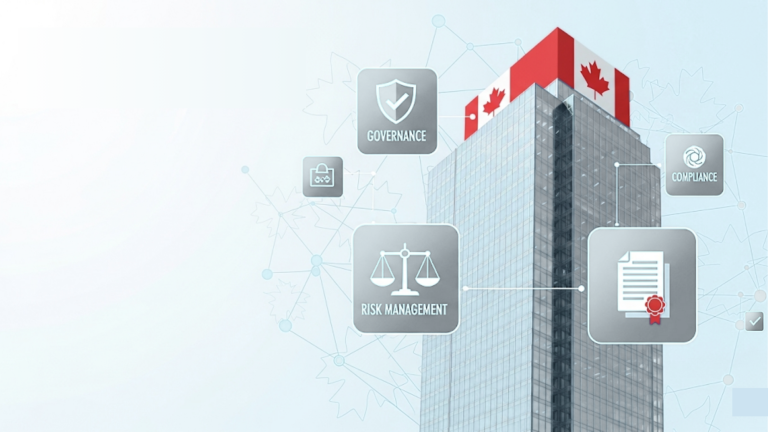Accurate timeline planning prevents unrealistic expectations and ensures adequate resource allocation throughout the certification process. Our analysis of successful certification projects reveals specific duration patterns based on organizational characteristics and implementation approaches.
Based on analysis of hundreds of certification projects, organizations typically require 6-18 months to achieve ISO 27001 certification, with timeline variations driven by company size, complexity, existing security maturity, and resource allocation.
This comprehensive timeline guide provides realistic expectations, identifies common delay factors, and offers proven acceleration strategies to optimize your certification schedule.
Whether you are preparing for ISO 27001 certification, or simply looking for information on the certification, you may also find our ISO 27001 Complete Guide post insightful.
Timeline Overview by Organizational Complexity
Simple Organizations: 6-9 months
Characteristics:
- Single location with straightforward business processes
- Limited technology infrastructure and data complexity
- Existing security awareness and basic controls in place
- Dedicated resources available for implementation
- Clear scope boundaries with minimal external dependencies
Typical Timeline Breakdown:
- Months 1-3: Foundation, planning, and risk assessment
- Months 4-6: Implementation and control deployment
- Months 7-9: Internal audit, certification audit, and certificate issuance
Complex Organizations: 9-15 months
Characteristics:
- Multiple locations or business units requiring coordination
- Diverse technology environment with legacy systems
- Regulated industry with additional compliance requirements
- Matrix organization structure requiring cross-functional alignment
- Integration with existing management systems (ISO 9001, ISO 14001)
Typical Timeline Breakdown:
- Months 1-4: Extended planning, multi-site coordination, and comprehensive risk assessment
- Months 5-10: Phased implementation across locations and business units
- Months 11-15: Multi-site internal audits, certification audit preparation, and certification
Multi-Site Organizations: 12-18 months
Characteristics:
- International operations with varying regulatory requirements
- Complex supply chain and third-party relationships
- Multiple business lines with different risk profiles
- Acquisition integration requiring ISMS harmonization
- Distributed IT infrastructure with hybrid cloud environments
Typical Timeline Breakdown:
- Months 1-6: Strategic planning, harmonization, and phased risk assessment
- Months 7-12: Coordinated implementation across global operations
- Months 13-18: Comprehensive auditing, remediation, and certification
Detailed Phase-by-Phase Timeline
Phase 1: Preparation and Planning (3-6 months)
Month 1-2: Foundation and Planning
Week 1-2: Project Initiation
- Executive commitment and resource allocation: 2-4 weeks
- ISMS scope definition and project charter: 2-3 weeks
- Team formation and initial stakeholder alignment: 1-2 weeks
Week 3-4: Initial Assessment
- Baseline security assessment: 2-3 weeks
- Preliminary gap analysis: 2-3 weeks
- High-level risk identification: 1-2 weeks
Week 5-8: Team Building and Training
- Team formation and role definition: 1-2 weeks
- Initial ISO 27001 training for core team: 2-3 weeks
- Project governance establishment: 1-2 weeks
- Stakeholder communication plan development: 1 week
Month 3-4: Risk Assessment and Analysis
Week 9-12: Comprehensive Risk Assessment
- Detailed asset inventory and classification: 3-4 weeks
- Threat and vulnerability assessment: 2-3 weeks
- Risk analysis and evaluation: 2-3 weeks
- Initial risk treatment planning: 1-2 weeks
Week 13-16: Gap Analysis and Planning
- Detailed control gap analysis: 3-4 weeks
- Statement of Applicability development: 2-3 weeks
- Implementation planning and prioritization: 2-3 weeks
- Resource allocation and timeline refinement: 1-2 weeks
Month 5-6: Policy Development and Design
Week 17-20: Policy Framework Development
- Information Security Policy development: 2-3 weeks
- Supporting procedure creation: 3-4 weeks
- Policy review and approval cycles: 2-3 weeks
- Communication and awareness planning: 1-2 weeks
Week 21-24: ISMS Architecture Design
- Control selection and justification: 2-3 weeks
- Implementation approach design: 2-3 weeks
- Measurement and monitoring framework: 1-2 weeks
- Documentation structure and templates: 1-2 weeks
Phase 2: Implementation (2-4 months)
Month 7-8: Control Deployment
Week 25-28: Technical Control Implementation
- Access control system deployment: 3-4 weeks
- Network security control implementation: 2-3 weeks
- Monitoring and logging system configuration: 2-3 weeks
- Cryptographic control deployment: 1-2 weeks
Week 29-32: Administrative Control Rollout
- Security awareness training delivery: 3-4 weeks
- Procedure implementation and training: 2-3 weeks
- Incident response procedure testing: 1-2 weeks
- Vendor management control implementation: 2-3 weeks
Month 9-10: Testing and Validation
Week 33-36: Control Effectiveness Testing
- Technical control testing and validation: 3-4 weeks
- Administrative control effectiveness review: 2-3 weeks
- Physical control implementation and testing: 1-2 weeks
- Integration testing and validation: 2-3 weeks
Week 37-40: Performance Measurement
- Monitoring system validation: 2-3 weeks
- Key performance indicator establishment: 1-2 weeks
- Initial performance measurement: 2-3 weeks
- Baseline establishment and reporting: 1-2 weeks
Phase 3: Audit and Certification (2-3 months)
Month 11: Internal Audit and Review
Week 41-44: Internal Audit Execution
- Internal audit planning and preparation: 1-2 weeks
- Comprehensive internal audit execution: 2-3 weeks
- Finding analysis and corrective action planning: 1-2 weeks
- Follow-up and verification activities: 1-2 weeks
Week 45-48: Management Review and Preparation
- Management review preparation: 1 week
- Management review meeting execution: 1 week
- External audit preparation: 2-3 weeks
- Documentation organization and evidence collection: 1-2 weeks
Month 12-13: External Certification Audit
Week 49-52: Certification Body Selection and Stage 1
- Certification body evaluation and selection: 2-3 weeks
- Audit application and scheduling: 1 week
- Stage 1 audit execution: 1 week
- Stage 1 finding resolution: 1-2 weeks
Week 53-56: Stage 2 Audit and Certification
- Stage 2 audit preparation: 1-2 weeks
- Stage 2 audit execution: 1-2 weeks
- Finding resolution and corrective actions: 1-2 weeks
- Certificate issuance and celebration: 1 week
Common Delay Factors and Prevention
Insufficient Management Commitment
Average Delay: 6-12 weeks
Symptoms:
- Delayed decision-making on critical issues
- Resource reallocation to other priorities
- Scope changes and requirement modifications
- Extended approval cycles for policies and procedures
Prevention Strategies:
- Formal project charter with executive sponsorship
- Regular steering committee meetings with senior leadership
- Clear escalation procedures for decision-making
- Regular communication of business benefits and progress
Inadequate Resource Allocation
Average Delay: 8-16 weeks
Symptoms:
- Competing priorities for key team members
- Part-time team assignments reducing productivity
- Extended deliverable timelines due to capacity constraints
- Quality issues requiring rework and correction
Prevention Strategies:
- Realistic resource planning with contingency allocation
- Dedicated team assignments for critical roles
- Clear role definitions and accountability structures
- Regular resource utilization monitoring and adjustment
Scope Creep and Boundary Changes
Average Delay: 4-8 weeks
Symptoms:
- Expanding ISMS boundaries during implementation
- Additional compliance requirements discovered mid-project
- Organizational changes affecting scope definition
- Stakeholder requests for scope expansion
Prevention Strategies:
- Clear scope documentation with change control procedures
- Regular stakeholder communication and expectation management
- Formal change request process with impact assessment
- Executive approval required for scope modifications
Documentation Quality Issues
Average Delay: 6-10 weeks
Symptoms:
- Audit findings requiring significant documentation rework
- Inconsistent documentation quality across teams
- Missing evidence collection and audit trails
- Poor alignment between policies and implementation
Prevention Strategies:
- Regular quality reviews and peer assessments
- Standardized documentation templates and guidelines
- Professional documentation support and review
- Early internal audit cycles to identify quality issues
Technology Implementation Challenges
Average Delay: 8-12 weeks
Symptoms:
- Integration complexity with existing systems
- Vendor delays in software delivery or configuration
- Technical configuration issues and troubleshooting
- Inadequate testing and validation procedures
Prevention Strategies:
- Early technology assessment and vendor evaluation
- Proof-of-concept implementations before full deployment
- Comprehensive testing procedures and validation
- Contingency planning for technology alternatives
Acceleration Strategies and Best Practices
Automation and Tool Utilization
Timeline Reduction: 20-30%
GRC Platform Benefits:
- Automated evidence collection and documentation
- Workflow automation for approval processes
- Integrated risk assessment and control mapping
- Real-time monitoring and reporting capabilities
Implementation Approach:
- Early GRC platform selection and deployment
- Automated workflow configuration for routine tasks
- Integration with existing security and IT systems
- Training programs for platform utilization
Experienced External Support
Timeline Reduction: 20-30%
Consultant Value Proposition:
- Proven methodologies and best practices
- Industry-specific expertise and experience
- Accelerated implementation through templates and tools
- Risk mitigation through expert guidance
Engagement Approach:
- Qualified consultant selection based on relevant experience
- Clear statement of work with deliverable definitions
- Knowledge transfer planning for internal capability building
- Collaborative approach with internal team development
Phased Implementation Approach
Timeline Optimization: 15-25%
Implementation Strategy:
- Core controls prioritized for early implementation
- Non-critical controls deployed parallel to audit preparation
- Risk-based prioritization focusing on high-impact areas
- Pilot programs to validate approach before full deployment
Benefits:
- Early wins and momentum building
- Reduced complexity and risk management
- Parallel activity execution for efficiency
- Flexibility for scope and approach adjustments
Parallel Activity Execution
Timeline Reduction: 10-20%
Concurrent Activities:
- Policy development parallel to risk assessment
- Training delivery overlapped with control implementation
- Documentation preparation concurrent with system configuration
- Multiple audit preparation activities executed simultaneously
Coordination Requirements:
- Detailed project planning with dependency mapping
- Regular coordination meetings and status updates
- Clear communication channels and escalation procedures
- Resource allocation optimization across parallel activities
Milestone Markers and Progress Tracking
Month 3 Milestone: Risk Assessment Completion
Success Criteria:
- Complete asset inventory and classification
- Threat and vulnerability assessment finalized
- Risk treatment decisions approved by management
- Initial control selection documented
Validation Methods:
- Management review and approval of risk assessment
- Stakeholder feedback and validation sessions
- External expert review and recommendations
- Baseline metrics and measurement establishment
Month 6 Milestone: Policy Framework Approval
Success Criteria:
- Information Security Policy approved and communicated
- Supporting procedures developed and reviewed
- Control implementation guidelines established
- Training program ready for deployment
Validation Methods:
- Formal policy approval and communication
- Employee feedback and comprehension assessment
- Policy effectiveness and usability evaluation
- Training program pilot testing and validation
Month 9 Milestone: Control Implementation Complete
Success Criteria:
- All selected controls deployed and operational
- Control effectiveness measurements established
- Monitoring systems configured and reporting
- Evidence collection processes operational
Validation Methods:
- Control testing and effectiveness validation
- Monitoring system verification and reporting
- Evidence quality assessment and organization
- Performance measurement and baseline establishment
Month 11 Milestone: Internal Audit Success
Success Criteria:
- Internal audit completed with acceptable results
- Nonconformities resolved with effective corrective actions
- Management review confirms ISMS effectiveness
- External audit preparation complete
Validation Methods:
- Internal audit report and finding resolution
- Management review meeting and approval
- External audit readiness assessment
- Documentation quality and organization verification
Month 12-13 Milestone: Certification Achievement
Success Criteria:
- Stage 1 audit passed with minor findings
- Stage 2 audit demonstrates effective implementation
- ISO 27001 certificate issued
- Surveillance audit schedule established
Validation Methods:
- Certification audit reports and conclusions
- Certificate issuance and validity verification
- Surveillance audit planning and preparation
- Ongoing compliance monitoring establishment
Industry-Specific Timeline Considerations
Healthcare Organizations
Additional Timeline: 2-4 weeks
- HIPAA alignment review and validation
- Patient data protection control implementation
- Medical device security assessment
- Regulatory compliance verification
Financial Services
Additional Timeline: 3-6 weeks
- Regulatory framework alignment and validation
- Enhanced third-party risk management
- Payment processing security controls
- Regulatory notification and approval processes
Government Contractors
Additional Timeline: 4-8 weeks
- Security clearance coordination and validation
- NIST Cybersecurity Framework alignment
- Classified information handling procedures
- Government approval and verification processes
Technology Companies
Additional Timeline: 2-4 weeks
- Cloud security control implementation
- Software development lifecycle security
- API and integration security assessment
- Customer data protection and privacy considerations
Timeline Optimization Checklist
Pre-Implementation Planning
- Realistic timeline development with contingency planning
- Adequate resource allocation and team availability
- Clear scope definition and boundary establishment
- Stakeholder commitment and expectation alignment
During Implementation
- Regular milestone tracking and progress assessment
- Proactive risk management and issue escalation
- Quality assurance and validation procedures
- Flexible approach with adaptation capability
Audit Preparation
- Early certification body engagement and selection
- Comprehensive audit preparation and readiness assessment
- Evidence organization and accessibility verification
- Internal audit execution and finding resolution
Conclusion
Successful ISO 27001 certification requires realistic timeline planning, adequate resource allocation, and proactive risk management. Organizations that follow proven implementation approaches, leverage appropriate external support, and maintain executive commitment consistently achieve certification within planned timelines.
The key to timeline success lies in understanding organizational complexity, identifying potential delay factors early, and implementing proven acceleration strategies. With proper planning and execution, most organizations can achieve ISO 27001 certification within 6-15 months while building lasting security management capabilities.







